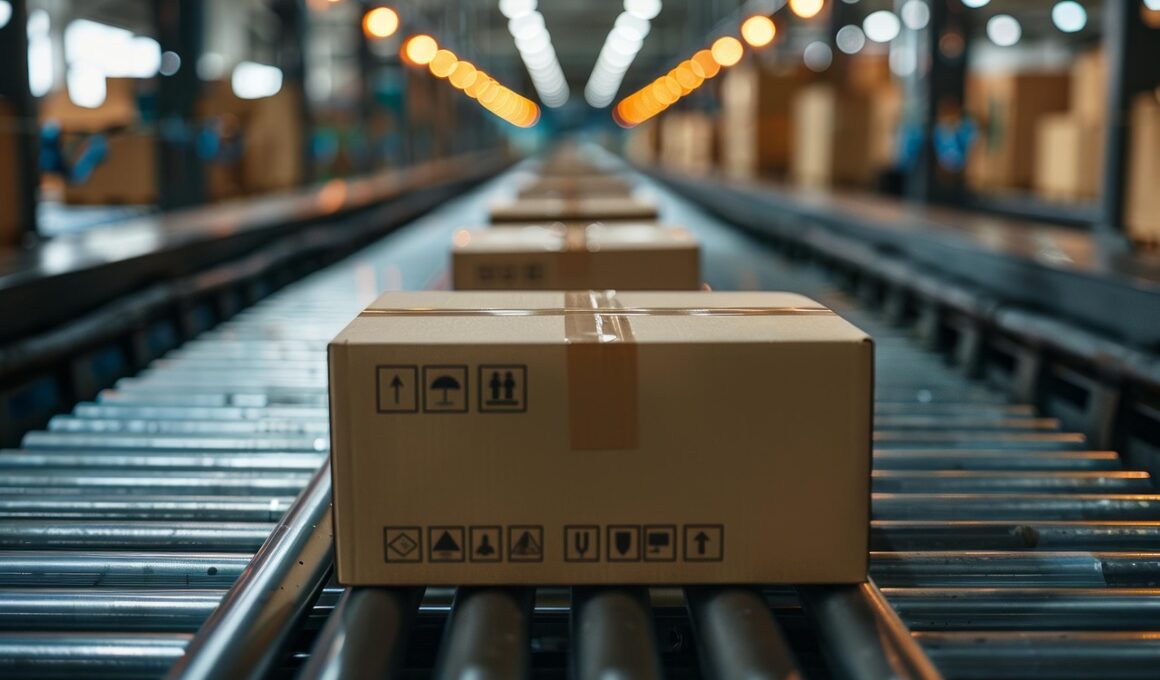Crowdfunding Fulfillment: In-House vs Third-Party Logistics Providers
In the realm of crowdfunding, successful fulfillment is crucial for the satisfaction and retention of backers. After a campaign gains funding, the next step is delivering promised rewards effectively and efficiently. Fulfillment can either be managed in-house or outsourced to third-party logistics providers. Each alternative presents distinct benefits and challenges. In-house teams provide full control over the process, allowing for personalized customer experiences. However, this may also strain resources, especially if the campaign scales quickly. On the other hand, third-party logistics can streamline fulfillment, scaling effortlessly with demand. These providers have established networks and technologies optimized for speed and accuracy. Choosing the right path involves weighing these options while considering budget constraints and long-term sustainability for your brand. Understanding your unique needs and evaluating your team’s operational capacity are key in this decision-making process. Not every option suits every campaign, and thus careful consideration is paramount. The next sections will shed light on the pros and cons of both strategies to aid your decision.
In-House Fulfillment: Pros and Cons
In-house fulfillment offers potential advantages that can enhance your crowdfunding campaign’s efficiency and brand identity. Managing fulfillment internally means fostering stronger relationships with your backers, as you have complete control over every aspect of the process. This can lead to personalized packaging, tailored communications, and a more cohesive brand image. Moreover, handling fulfillment in-house allows you to maintain better oversight on inventory and production timelines, reducing the risk of stockouts or delays. Yet, this approach is not without drawbacks. Operating an in-house fulfillment center requires significant initial investment in space, equipment, and manpower. The logistics can become overwhelming when scaling production with increased demand. Staffing can also be a challenge, as it requires hiring trained personnel who understand the nuances of order processing and shipping. Furthermore, fluctuations in demand can lead to inefficiencies and increased costs. Therefore, before deciding on this approach, carefully evaluate your unique capabilities, budget, and the implications for long-term growth. Balancing these factors will determine whether in-house fulfillment aligns with your campaign’s overall strategy.
Outsourcing fulfillment to a third-party logistics (3PL) provider brings numerous operational advantages to crowdfunding campaigns. By leveraging specialized logistics companies, campaign creators can access proven expertise in warehousing, order processing, and shipping. These providers can often deliver faster and more reliably than most in-house operations, thanks to established networks and advanced technology. Additionally, engaging a 3PL eliminates the need for upfront capital investment in infrastructure and staff. This allows you to focus on marketing and product development instead of the intricacies of logistics, enhancing overall productivity. However, utilizing a third-party provider may lead to potential downsides. You may sacrifice some level of control over customer interactions and fulfillment quality. Dependence on an external partner can also pose risks; delays or errors on their part could adversely affect your brand’s reputation. Transparency and communication are critical in these relationships and must be clearly defined. To mitigate setbacks, it’s vital to thoroughly vet potential partners, ensuring they align well with your brand’s standards. Such partnerships can be mutually beneficial and can leverage strengths effectively.
When evaluating in-house versus third-party logistics providers, cost is often a decisive factor. Maintaining an in-house fulfillment center could lead to higher fixed costs due to staffing, facilities, and materials. You are responsible for ensuring that your operations are efficient, which often includes managing unexpected hurdles like order spikes or inventory shortages. Conversely, third-party logistics typically operate on a pay-per-use basis. This means you only pay for storage space, delivering goods, and service only when needed, contributing to lower initial costs. For growing crowdfunding campaigns, this flexibility can prove advantageous. However, hidden fees and charges can arise with 3PL services, complicating budgeting further. This emphasizes the importance of thoroughly reviewing contracts and understanding the fee structure before establishing these partnerships. Transparency and comprehensive discussions with potential providers can alleviate many concerns. Ultimately, your decision should balance immediate financial realities against long-term growth projections. Understanding the financial implications clearly will help you select the more sustainable option for your crowd-funded initiative.
Quality Control and Customer Service
Quality control and customer service are critical considerations when selecting between in-house fulfillment and third-party logistics providers. Managing fulfillment in-house allows for greater oversight, ensuring that every product meets your established quality standards. This direct involvement can lead to a stronger connection with your backers, enhancing customer satisfaction through personalized interactions and responsive service. You’ll have the ability to address issues immediately, fostering trust and loyalty among supporters. However, as your backer base grows, this personal touch may become challenging to maintain. On the contrary, trusted third-party logistics providers often possess robust systems and protocols specifically designed for maintaining high standards. However, they might not share the same passion for your brand, which can lead to inconsistencies in the customer experience. Balancing quality with efficiency requires careful consideration of how you connect with backers while delivering rewards. Ultimately, this decision can impact your backers’ perceptions of your brand and how they engage with future campaigns. Quality control should be prioritized, as it can determine not only immediate success but also long-term viability.
The choice between in-house fulfillment and third-party logistics also impacts the time-to-delivery for your crowdfunding rewards. When managed internally, campaigns can personalize shipping timelines, sometimes leading to quicker deliveries for local backers. However, efficiency can wane during peak seasons or unexpected demand upswings. In-house teams may struggle with the logistics of high-volume shipping operations, potentially leading to delays. This is where third-party providers typically excel. They possess the infrastructure and experience to scale quickly, enabling timely deliveries regardless of order volumes. As a backer, receiving rewards on time significantly influences satisfaction. Poor or delayed fulfillment can lead to disappointment and resentments among supporters, potentially damaging future campaigns. Moreover, third-party logistics are often capable of using advanced software to track orders, providing real-time updates to backers about their shipments. This transparency fosters goodwill and enhances the overall customer experience. Choosing the right fulfillment strategy can help alleviate worries about delays and ensure your backers remain engaged and positive about subsequent campaigns. This consideration should be a significant aspect of your logistical strategy.
The Final Decision
Ultimately, the decision between in-house fulfillment and utilizing third-party logistics providers rests on various factors. Each approach has its unique set of advantages and challenges, making it essential to align your choice with specific campaign goals and available resources. For some, maintaining control and cultivating direct relationships with backers through in-house fulfillment may outweigh any logistical hurdles. For others, outsourcing to logistics specialists can provide the expertise necessary for scale and efficiency. Carefully analyze your brand’s mission, operational capabilities, product types, and the anticipated volume of orders when making this choice. Gathering insights from previous campaigns and case studies may also provide valuable guidance in this decision-making process. Additionally, consider discussing with other campaign creators about their experiences with either option. This collaboration can foster a community of learning and sharing best practices that ultimately drive better results. As crowdfunding continues to grow, navigating these fulfillment channels effectively will be key to your campaign’s long-term success and sustainability.
By understanding the distinctions between in-house fulfillment and third-party logistics, campaign creators can better prepare for successful crowdfunding outcomes. Thoroughly weighing the pros and cons of each option can significantly influence the backer experience and overall campaign effectiveness. An adaptable approach that incorporates the strengths of both methods may also be worth exploring if resources allow. Depending on campaign dynamics, a hybrid strategy may yield the best results, ensuring that you can meet both quality and efficiency goals. Don’t overlook the importance of a well-documented plan that outlines fulfillment processes and expectations. Whichever path you choose, remember that adaptability and planning are key to navigating challenges that arise during fulfillment. A comprehensive understanding of your options can position your crowdfunding project for success on all fronts. Prioritizing backer experiences will build enthusiasm and encourage repeat supporters in future projects, effectively creating a loyal customer base. Cultivating these relationships post-campaign is essential to maintaining your brand reputation and encouraging ongoing engagement with your products. Plan for the long term by assessing how your fulfillment strategy aligns with future offerings.


